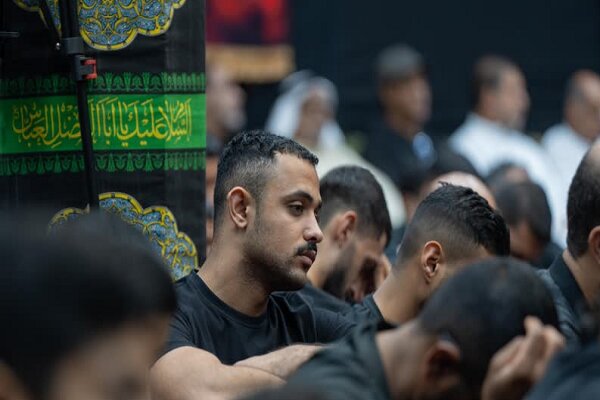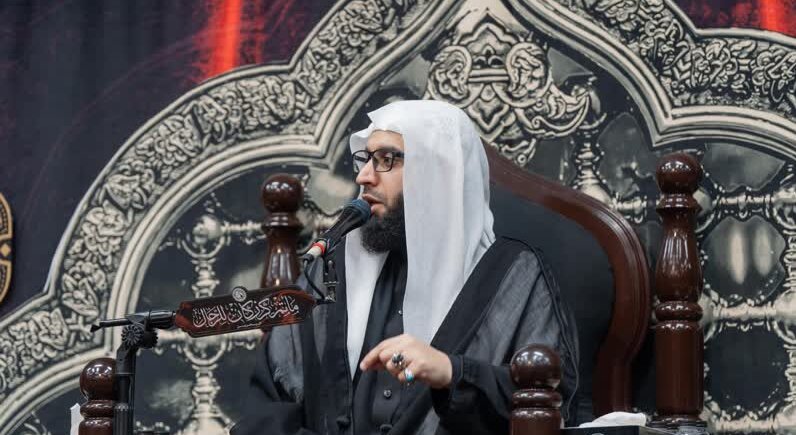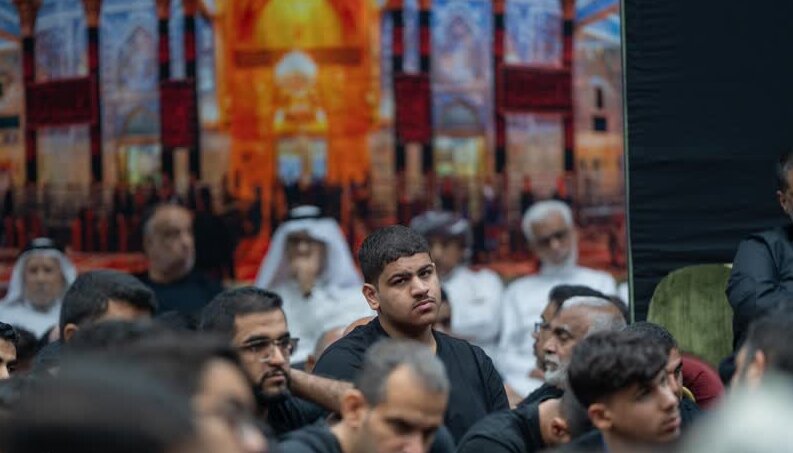Muharram in Bahrain; From Hosseinieh of Iranians to Hayat Ashurai people

Mehr News Agency, International Group, A Lenaz Rahmatnejad: Ceremony Ashura and the oppressed martyrdom of Imam Hussain (a.s.) and 72 of his noble companions have a special atmosphere in Bahrain. From the beginning of Muharram, the façade of the Hussainiehs in Bahrain is covered in black and Ashura slogans and black flags are installed outside the Hussainiehs.
In most Hosseiniyehs, especially the Bahraini Arab Shia Hosseiniyehs, the preachers recite prayers and laments in the morning and at night. On the days and nights of the 7th, 8th, 9th, and 10th days of Muharram, chest-shaking and chain-shaking ceremonies are held, and mourning processions regularly march through the streets and alleys.
At the same time with the arrival of Muharram 1446, we started to introduce mourning habits and customs in the Islamic world.
The first to ninth part of this report, which is dedicated to mourning habits and customs in Lebanon, Pakistan, Iraq, Kuwait, Turkey, England, America, Afghanistan and Oman, can be read from the following links and The review is:
* “Mahram in Lebanon; from ceremony prayer Party Allah in Suburb To recitation at Nabatieh”
* “Mahram in Pakistan; Fromthe symbolic ceremony “Zul-Janah” to Ship “Ship Salvation”
* « Moharram Hosseini’s passion in Iraq; From the ceremony of changing the flag to the “Rakzah Toweerij”
* “Mahram in Kuwait; From the presence of the Sunnis next to the Shiites to the restrictions of mourning”
* “Mahram inTurkey; from conducting tazih 300 thousand Nefri Ta Zainabiyah Istanbul»
* “Muharram riot among Muslims living in England; From the infatuation of the Christian priest to the three-kilometer mourning procession”
* “Secretism in America; From the day of Imam Hossein in Manhattan to reciting prayers in Maryland”
* “Mahram in Afghanistan; from glory mourning in Ghazni to ceremony secretKandahar»
* “Muharram in Oman; From the multinational mourning ceremony to the tragic incident of Wadi al-Kabeer”
In the following, we read the detailed final and tenth part of this case, which deals with mourning habits and customs in Bahrain;
Hosseiniha Irani
About 70% of the population of Bahrain are Shiites. Generally, Bahraini Shiites participate in mourning ceremonies widely in nearby cities, towns and villages; Ashura has had a great impact on the life of Shiites in Bahrain, and the only way they have to announce their political and social presence is to attend Hussainiyyas and perform mourning. In fact, Bahrainis have everything they have from Ashura.
According to reliable reports in Bahrain, the term “Hatam” is used for Hosseiniyeh, and Shiites hold all social ceremonies, religious holidays and even their children’s weddings in Hatams. There are about 300 large and small Bab Hussainiyya in Bahrain, some of which are held in endowment residential houses. There are nearly 500 large and official tekeh houses where mourning is held throughout the year.
Iranians of origin in Bahrain have about 10 Bab Hosseiniyya and perform mourning in Persian language. Indian and Pakistani Shiites also hold mourning ceremonies in their own style. Sunni brothers also have a special devotion and interest in the Prophet’s family and the Muharram ceremony. The days of Tasua and Ashura are official holidays from the government and all ministries and governmental and non-governmental organizations are closed.
Ceremony of reciting tazee and distributing offerings
The ceremony of chanting prayers is still popular in some parts of Bahrain. Also, in advance, groups of black flags and Ashura slogans and sometimes black-clad horses move in front of the Imam. Some groups of Sina Zani play cymbals and tambourines.
Public feeding and distribution of syrup is widely done in these few days. The Hosseiniyehs in Bahrain are open throughout the two months of Muharram and Safar, and hold mourning ceremonies and reciting prayers.
Ashura School; The lesson of a happy life
The government of Bahrain has not prevented the Ashura ceremony from a long time ago, but in the last few years, when Bahrain suffered from political crises and differences arose between the Shiites and the government, the security forces severely restricted the ceremony. On the days of Tasua and Ashura, Arbaeen and 28th Safar, they especially control the breast-feeding groups to prevent chaos.
The commemoration of Ashura has now become wider and more meaningful in this country, and people, especially the young generation, learn the lessons of their prosperous life from the school of Ashura, and with special attention Those who attend this ceremony understand its depth and value more every year.
At the same time as the arrival of Muharram 1446, Bahraini Muslims mourned the martyrdom of Imam Hussain (AS) by wearing black clothes in the areas of Al-Sanabs, Al-Kura and Al-Deir, and by setting up groups of breast-beaters. Lovers of Imam Hussain (AS) also mourned Hazrat Aba Abdullah (AS) in Hosseinieh Karzakan in Karzakan village of this country.





